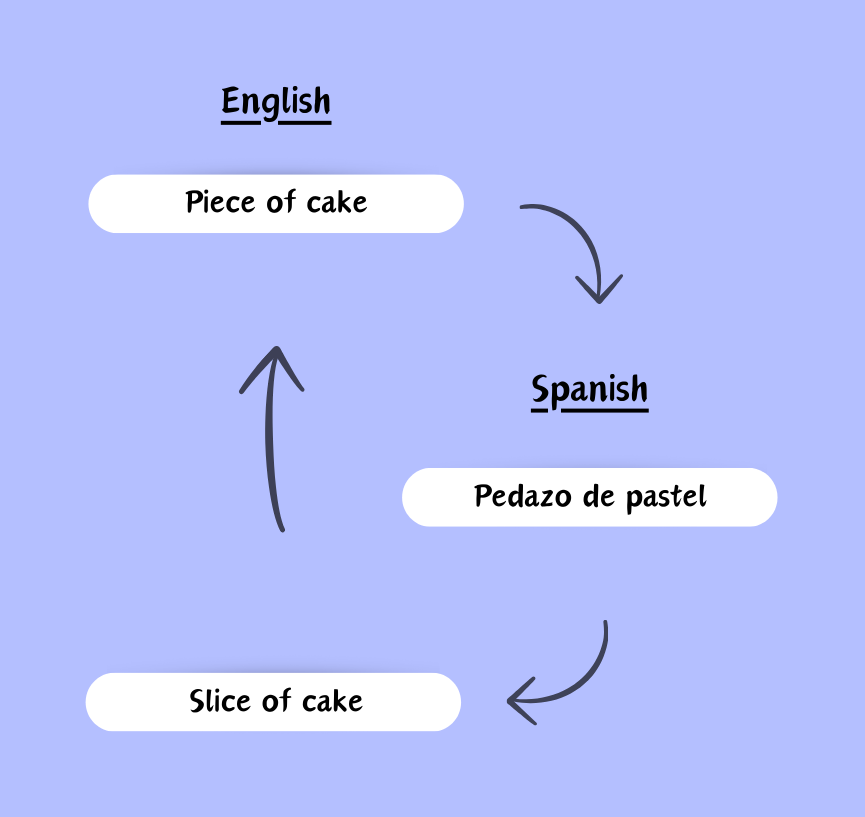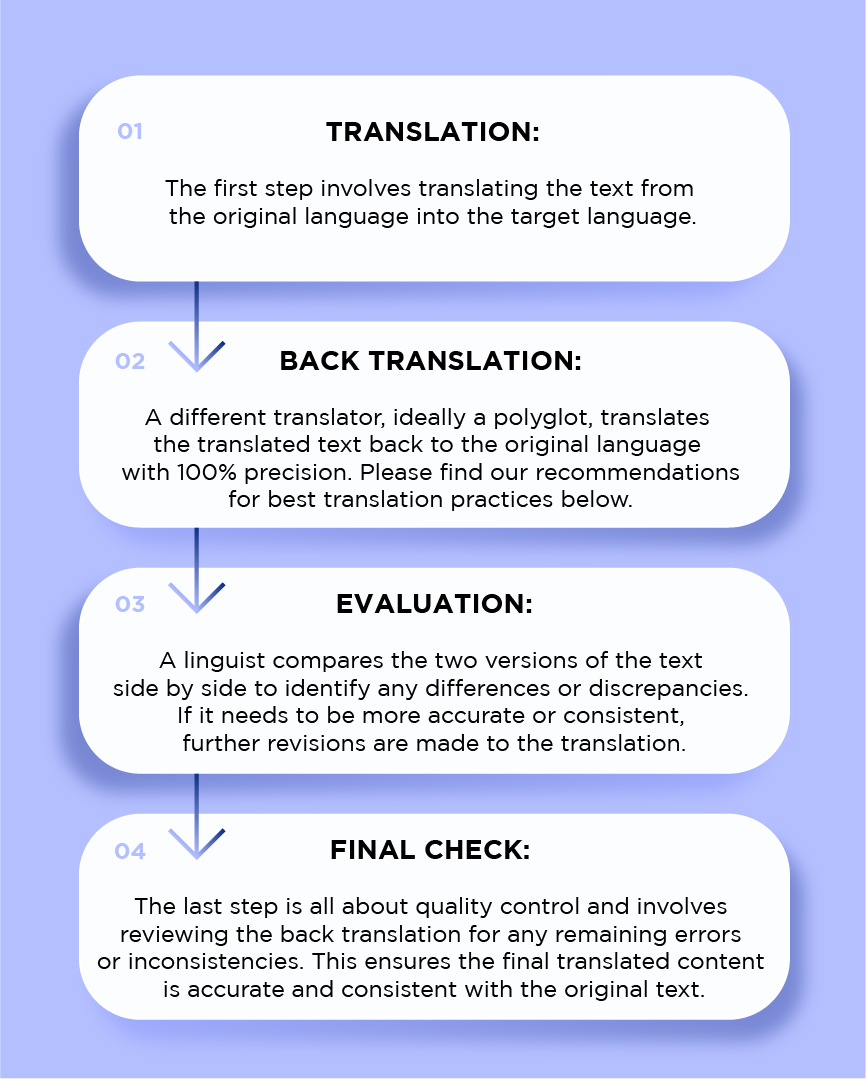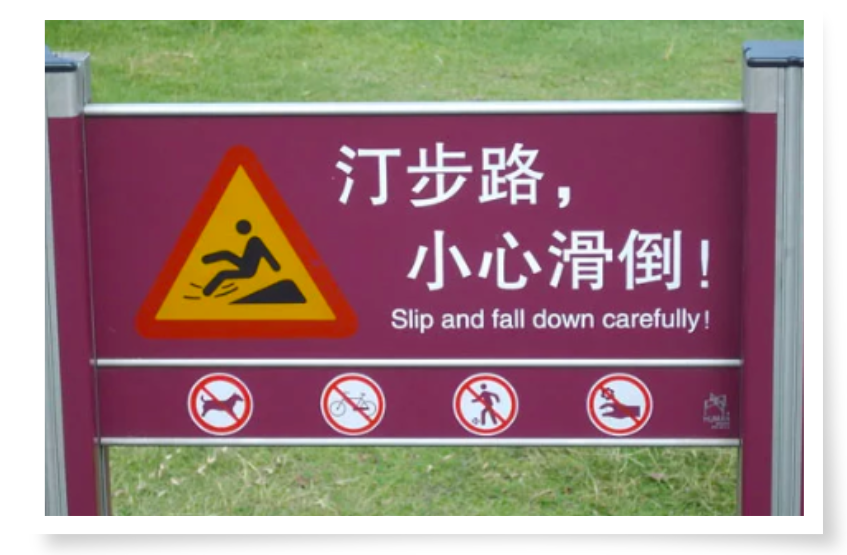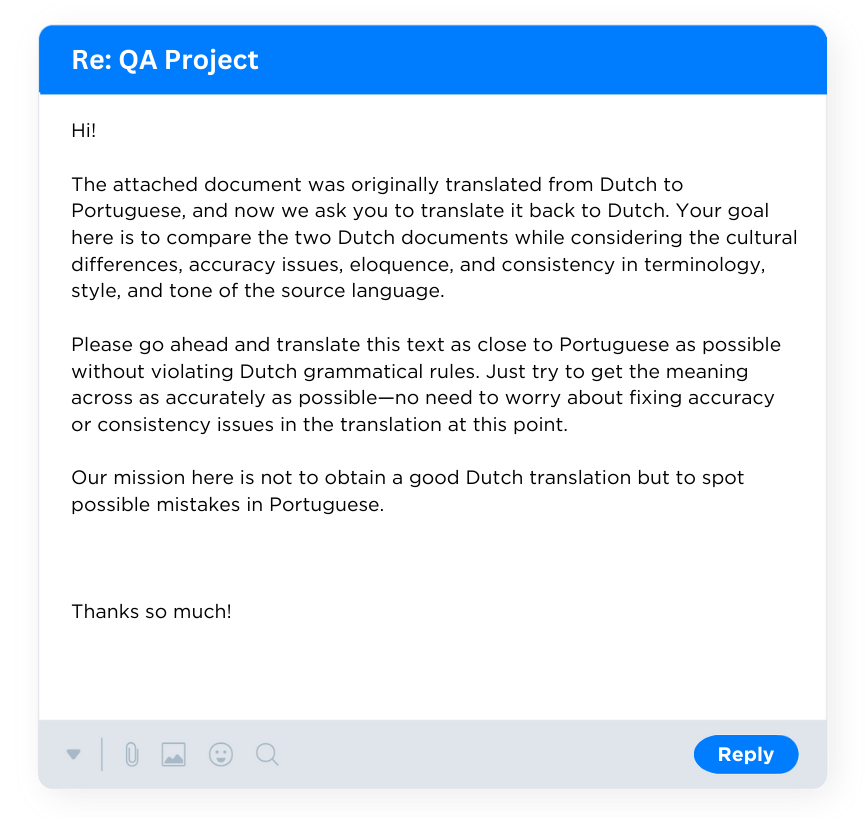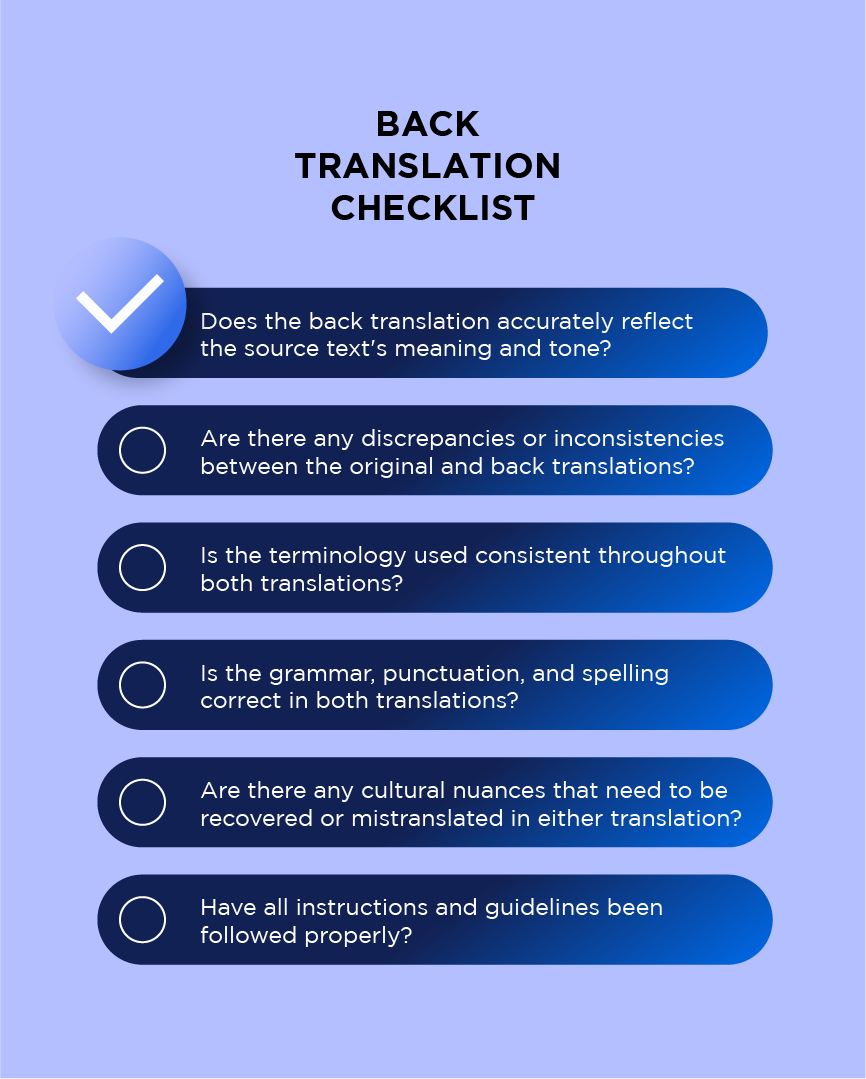Looking for the most impactful quality assurance method in localization? Over the years, we’ve seen different strategies come and go. Often, it seems like the more time we invest in crafting creative content in one language, the less impactful it can become when translated into another. If you want to improve your translation process, you have come to the right place.
In this article, we’ll explore the back-translation concept and its wide range of applications. Plus, we’ll reveal how you can leverage this powerful tool to ensure your localization efforts never go in vain. Are you ready to discover how this method can help bridge language gaps and allow you to reach a wider audience the right way?
Read on for a complete breakdown of the method and some examples to illustrate its versatility. But first things first.
What is back translation?
As the name suggests, back translation, also called reverse translation, is the process of re-translating a translation back to its original language. This type of translation involves a 360-degree comparison of the original text with its back translation, which is then used to evaluate the accuracy of the initial content.
It is a fantastic localization quality control method, as it allows for a thorough examination to identify any potential errors or discrepancies that may have occurred during the initial translation process.
Back Translation Process
This method is commonly used as a quality assurance process, especially in industries such as localization and other translation services, and it’s comprised of four key steps.
This process may seem simple, but it can be an incredibly valuable tool for ensuring high-quality translations that require an accurate depiction of the exact meaning of the original source text. Let’s look at some of the most common use cases.
Back translation applications
You are probably wondering when to use back translation and why. Back translation helps you create content while respecting all the different languages, cultural nuances, and idiomatic expressions. Conveying emotions and messaging can be challenging, and it’s a great way to ensure that the intended meaning and tone are preserved. The reason why it’s needed is simple. Identifying cultural faux pas or misunderstandings before publishing or launching a product can save you from potentially damaging consequences.
Undoubtedly, global brands have a dire need for a more creative type of reconciliation process. After all, traditional translation methods often fail to capture the precise meaning you may be seeking in another language. Sometimes, even when you manage to convey the same meaning, the resulting response in another language or culture may not be what you anticipate. Reverse translation is particularly useful when:
- You need to navigate cultural nuances while preserving the tone and style
- Your project has to capture localized cultural references and/or cultural appropriateness in visual content
- It is imperative to maintain accuracy and precision throughout the entire process
- You have to refine product names and/or slogans
- You are dealing with particularly creative content that’s critical to your business.
Creative content that makes a strong impression
Creative content is often the backbone of an organization’s marketing efforts. Picture this: You’re about to launch a new product across multiple geographical regions, and you’re knee-deep in creating captivating content to make it happen. You hired expensive creative agencies. You’ve spent exorbitant amounts of time, energy, and resources on developing your copy. You know your message is unique, and you’re ready to take the world by storm.
But how can you ensure its efficacy in different markets? Understanding the precise meaning of your ads in Chinese, German, or French can be daunting. Your project may need transcreation instead of translation.
Content for highly regulated industries
Creative translation can be an uphill battle in finance, health care, and law, where regulations are stringent. Technical and manufacturing fields also call for precision. More often than not, translators must have the necessary expertise and knowledge of the respective fields to deliver accurate translations.
In certain industries, regulations mandate the inclusion of back translation in the translation process. However, even without such regulatory requirements, ensuring accurate translations is important to prevent potentially severe consequences. Some examples include:
- Legal: Customs documents, taxation, insurance, laws, and contracts all require precise translations to avoid legal disputes.
- Technical: User manuals, product specifications, institutional review boards, and safety warnings must be accurately translated to ensure the safe usage of products.
- Medical: Patient records, assets of pharmaceutical companies, clinical research, clinical trials, medical devices, and drug information require precise translations for the well-being of patients and adherence to regulatory guidelines.
- Finance: Financial reports, banking and investment documents, stock market information, and audits need to be translated accurately for compliance with financial regulations.
Back translation examples
Most translations have meaningful differences between the first and final translation texts. As the following section illustrates, a project manager must spot errors well in advance to avoid potentially disastrous consequences.
BMW’s famous “Freude am Fahren” slogan was translated to “Sheer driving pleasure” in English. However, when translated back to German, it becomes “Fahrvergnügen”, which means “driving enjoyment”, with a slightly different connotation.
Another example is Coca-Cola’s slogan “Taste the feeling” which became “Sentir le goût” in French after translation. The back translation to English becomes “Feel the taste”, highlighting the slight difference in meaning and tone.
A humorous back translation example comes from KFC’s famous slogan, “Finger Lickin’ Good.” When translated into Chinese, it unfortunately turned into “Eat Your Fingers Off.” The glaring error was caught when the back translation was applied. This perfectly illustrates how back translation can be utilized as a quality assurance tool!
A more serious case involved Parker Pen’s slogan for its ballpoint pen. In Spanish, the slogan “It won’t leak in your pocket and embarrass you” was mistranslated as “It won’t leak in your pocket and make you pregnant.” In this case, the back translation would have revealed the awkward and mistaken forward translation.
As you can see, there are numerous ways of translating content, and the back translation technique (also known as double translation in some circles) is a useful tool to catch any mistranslations or errors that may have occurred. This ensures the accuracy of translated content and avoids any potential misunderstandings or harm caused by inaccurate translations.
These examples underscore the significance of back translation in a language service provider, ensuring the accuracy and maintaining the essence of the original message, especially for global brands communicating with diverse audiences.
Recommendations and best practices for back translation
Before we dive into practical advice and recommendations you can use immediately, let’s first clarify when you shouldn’t use back translation.
When to circumvent back translation
- When working with highly creative or culturally specific content, such as poetry or idiomatic expressions. Back translation can sometimes result in a literal and unnatural translation that loses the original meaning and cultural context.
- When translating technical texts where accuracy is critical, such as medical or legal documents, translating these texts requires specialized knowledge and expertise, so back translation may only sometimes be suitable.
You must hire several linguists if you decide to use any back translation services in your localization endeavors. Unfortunately, this would increase your project’s cost and complexity, so assessing whether back translation is necessary for each situation is important. A good rule of thumb is to only go for it when the cost of a mistranslation outweighs spending 2-3 times more on the project or if your content falls under strict regulations.
If it’s not necessary, but you still want to give it a shot, think long and hard about the content you choose to back-translate in advance to decrease costs effectively. Not to mention, you might come across documents or even sections of the text that don’t need any double-checking at all.
For projects of a non-critical nature that don’t absolutely require reverse translation, you can ensure quality with more affordable methods like having a second translator review the assets or doing multiple QA reviews to catch hard-to-spot issues.
Best Practices for back translation
Native Speakers
It’s essential to involve native speakers of the target language in the back translation process. They will better understand the nuances and cultural context of the original text, ensuring a more accurate translation.
Provide Context
When sending content for back translation, provide as much context as possible. This includes any reference materials or glossaries used in the original translation. The more information the back translator already has, the higher the chances of a faithful and accurate back translation. If you’re using a TMS like Transifex for localization, you have various ways to clarify the context to your translators, including screenshots, notes, and comments.
Utilize multiple translators
As mentioned before, involving multiple translators in the back translation process can effectively ensure quality. Multiple translators working on the same content can help catch discrepancies or mistakes and help you avoid conflicts of interest.
Consider cultural differences
Remembering that different cultures may express certain concepts or ideas differently is important. When back-translating, it’s crucial to understand these cultural nuances and adapt the translation accordingly.
Check for consistency
Review the translated document content for consistency in terminology, style, and tone. To remove biases, it’s best not to show the service providers the original text. Ask them to be as precise as possible without violating the original text’s grammar to produce an ineffective rendering verbatim.
Avoid Machine Translation
While it has advanced significantly in recent years, it still needs to be more reliable for back translation. It’s best to have human translators handle the back translation process to ensure accuracy and avoid potential errors.
Back translation workflow and SOPs
Standard Operating Procedures (SOPs) and back translation workflows are crucial. They provide a step-by-step process to ensure accurate and high-quality results that are replicable and can easily be shared with other team members. This includes guidelines for selecting translators, providing context, reviewing the completed translation, and addressing discrepancies. It is so important to have these in place!
You can use the following as a template.
Back translation instructions – a template
Here’s a great email template example that you can use for back translation and quality assurance purposes.
Back translation checklist
Make sure your translations are always of the highest quality, using the checklist below as a guide.
If you answered “yes” to all the above questions, congratulations! You have completed a successful back translation. If not, please review the translations and make any necessary changes before finalizing a new translation and sharing them with your team.
Target Language and Original Language Considerations for a Streamlined Translation Process
It’s critical to consider the target language when producing content, as your translators must be competent in this language. It will aid them in comprehending the context and nuances of the source text. In addition, it is also imperative to have a strong understanding of the original language being translated from.
This can help identify potential challenges or difficulties in translating certain phrases or terminology. By being mindful of these considerations, you can optimize your translation process and ensure high-quality translations every time. With Transifex’s translation memory feature and integrated Glossaries, you can also save commonly used phrases and terminology for consistent translations in the future, further streamlining your language translation process.
How to use Transifex for 5-star back translations
Transifex offers a user-friendly platform for managing and automating the entire translation process, including back translations. To ensure the highest quality of back translations, follow these steps:
- Upload your source text to Transifex as the original document.
- Select the target language and create a project.
- Invite translators who are proficient in both languages.
- Share custom Glossaries based on your brand’s style guide to ensure your message never gets lost in translation.
- When you receive the back translations, compare them to the source text and make any necessary edits or corrections.
- Use Transifex’s Translation Memory feature to save commonly used phrases and terminology for automated translations in the future.
- Once all back translations have been reviewed and finalized, export them to your preferred format for sharing with your team.
Where to find back translators for your next translation project
It would be best to look for individuals with experience with your specific language pair and subject matter. If you do not know of any freelance vendors within your network, you could assign back translations to highly appraised translation agencies with just a few clicks through the Transifex dashboard.
Maximizing localization ROI – one step at a time
Localizing your content with Transifex streamlines everything for busy professionals while ensuring a 5-star output. For more information, check our guide on how to calculate and maximize localization ROI for your next project.
Are you ready to unlock the power of Transifex to streamline your processes and improve translation quality once and for all? Schedule a demo with a Transifex specialist today and learn how to turn localization into a low-effort but high-value process.


